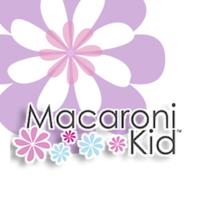The crew at Rubber Mulch have put together these leading safety tips for playground safety. The following guidelines will help you plan safe playground time for your little one(s).
Tips for Playground Safety:
- Maintain a visual line of sight with your children. If your kids are playing for hours, your eyes might start to wander, be aware and keep your kids in sight at all times. It’s so much easier to avoid injury when you can monitor what children are doing so that you can intervene when necessary.
- The opening in playground equipment should be less than 3.5 inches or larger than 9 inches so a child’s head can not get caught. If you notice that your little ones are playing on equipment that does not meet this criteria, move to a different playground or park. While calling the fire department to release your child’s head may be a good story to reminisce about later in life, we promise you won’t enjoy it in the moment.
- Check metal slides to make sure they’re not too hot to the touch. This is very important. On sunny days, metal slides can heat up very fast, and, if you’re not careful, your child could easily get burned or at the very least will not be a very happy camper.
- Make sure kids wear shoes or sneakers in the playground to protect their feet. Even if your child has all of his or her tetanus shots, the last thing you want to happen is to have to take your crying child home or to the ER to pluck a shard of glass or a splinter out of his or her foot. Running shoes are the best choice, and the least likely to cause an accident.
- The length of the soft surface under swings should be double the height of the swing set. You know the game where kids like to jump off the swing as far as they can to get as much height and length as possible? You want to be sure that your child has a cushioned blow, instead of hitting a hard surface like concrete. In addition, accidents do happen and kids can fall off a swing, again, making it crucial to ensure they land on a soft surface.
- Choose equipment that is right for your child’s size and age. For example, toddlers cannot use metal swings, seesaws, or slides just yet. Take your child’s height, weight, and dexterity into account when assessing risks. If you’re using a home playground, refrain from installing some of the equipment that requires a higher degree of skill until your child is a few years older.
- Place Rubber Mulch, mats, or soft surfaces under the playground equipment to cushion falls. For obvious reasons, it’s best to avoid playgrounds with a concrete surface altogether. If the playground is not appropriately equipped, it’s best to find another spot to let your kids play.
- Inspect the playground and sandbox for splintered wood, broken glass, sharp metals, uncovered chains or loose bolts, wet spots or missing ladder rungs. The little things can be the most dangerous, so be aware of what could cause your little one to slip and fall or to get injured. Other parents will thank you for it, too.
- Remove necklaces, scarves, and handbags, clothes with drawstrings or clothing that may get caught. Any of these items can become a chokehold or a dangling threat to your child and other children.
- Apply sunscreen on your kids before letting them play in the sun. Even when it’s cloudy outside, your kids are usually exposed to UV rays. It’s safest to keep them lathered up at all times, no matter the weather, especially when they’re out for hours at a time.
- Fence the playground in so kids can’t run into traffic. If you have one at home, place it in the backyard, or consider putting a barrier between the structure and the cars passing by. If you’re using a public playground, make sure that it is far enough away from traffic to keep your kids safe.
The folks at Rubber Mulch are all too familiar with the myriad of safety concerns and potential hazards on the playground turf and provide expert advice about playground safety. Playsafer Rubber Mulch was handpicked by First Lady Michelle Obama for the White House playground due to their stellar reputation for superior safety, quality and service. It is the original and environmentally responsible mulch made from 100% recycled rubber used in gardens, playgrounds and sustainable landscaping. Rubber Mulch is weather resistant, durable, and the most cost effective mulch around.


